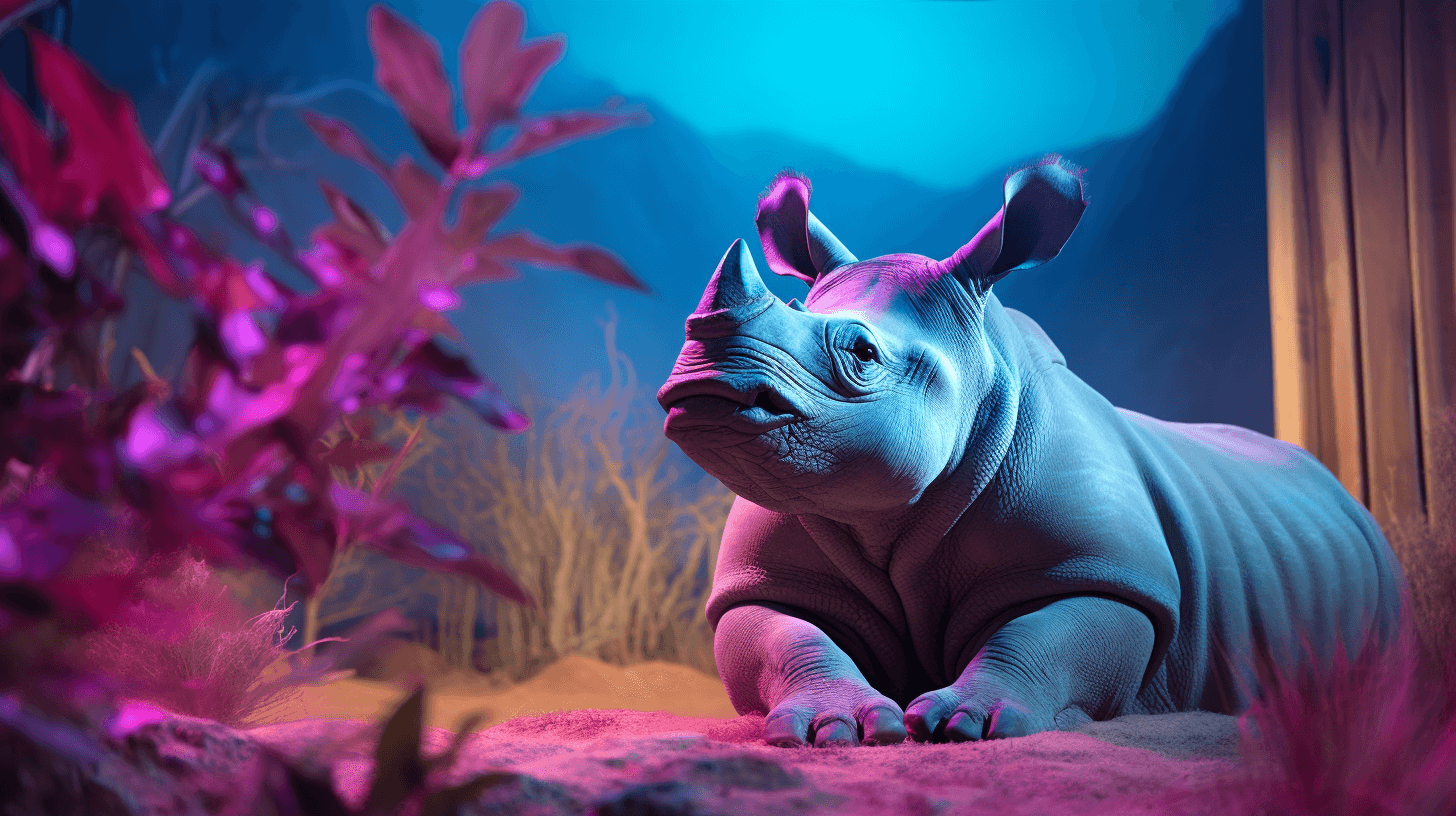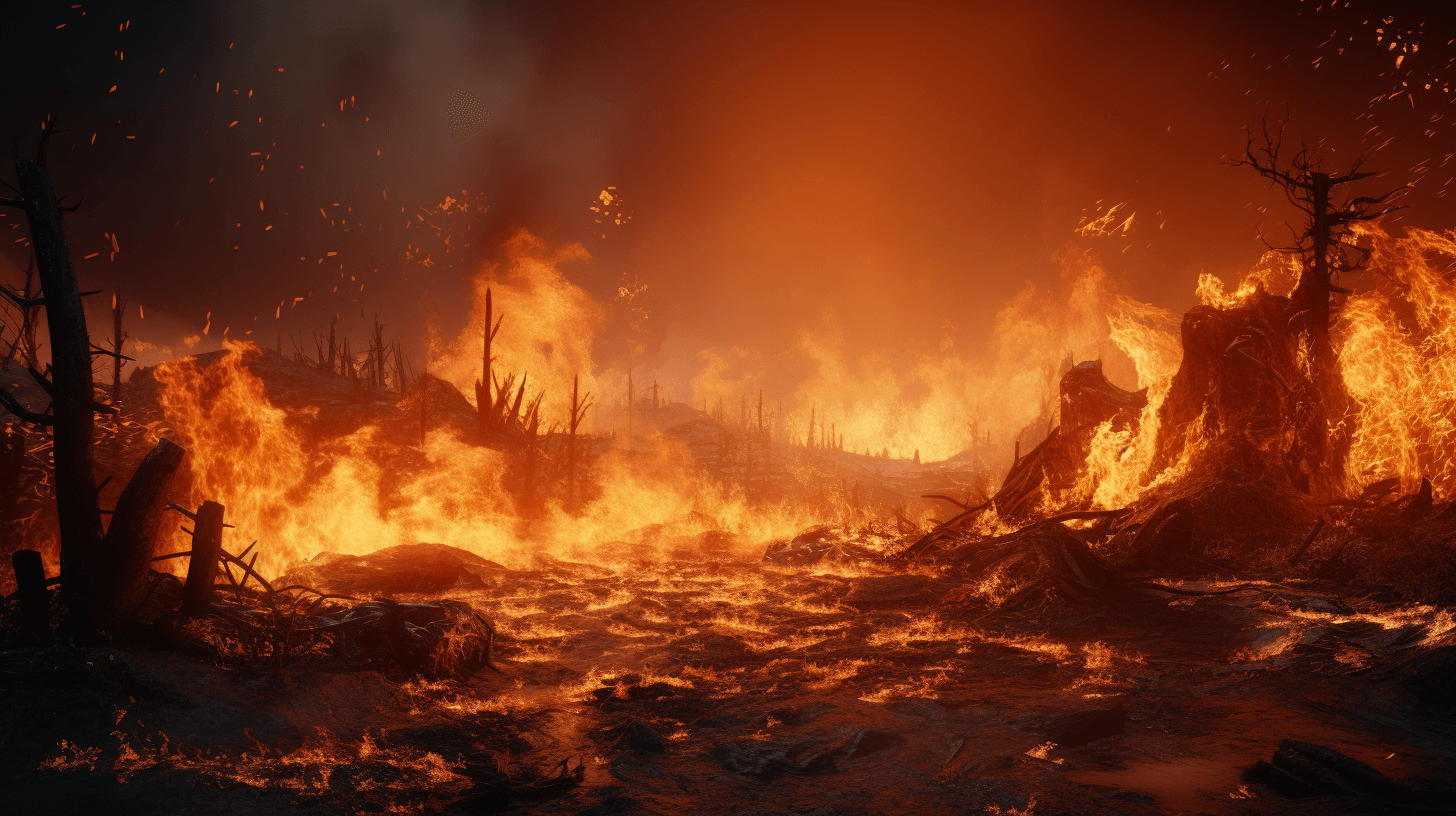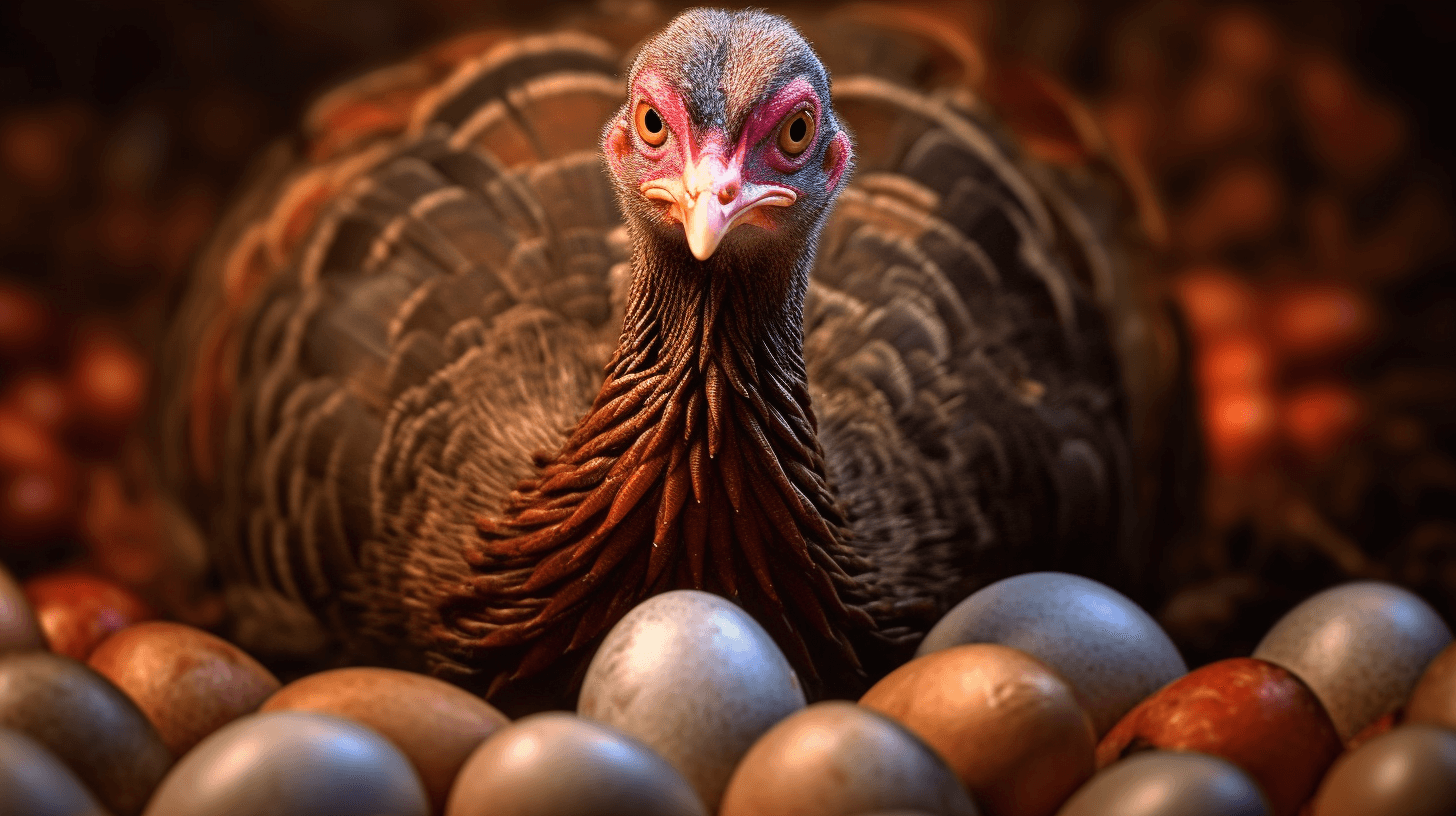🐝🔪 “Murda Hornets” Komo i ka U.S.: Da Scramble fo’ Stop da Asian Giant Hornet
🐝🔪 “Murda Hornets” Komo i ka U.S.: Da Scramble fo’ Stop da Asian Giant Hornet
Ho, braddahs an sistahs, get choke big kine stink eye goin’ on wit dis Asian giant hornet, da buggah dey call “murda hornet.” 🐝🔪 Da buggah stay showin’ face in da U.S. an’ get plenny peepo all pilikia dat dis mean stink bug goin’ wipe out all our bees. 🍯💔
So, dis local braddah, Ted McFall, he one long time beekeeper, yeah? He neva seen dis kine mess befo’. He was checkin’ on his bee hives near Custer, Wash., an’ from his truck, he see all kine dead bees on da ground. 🚚💀 As he look mo’ close, he see thousands of bees all hammajang, all decapitated an’ no sign of who done it. 🐝💔
Aftah, he tink maybe da killah was da murda hornet. Dese buggahs get queens dat can grow two inches long an’ dey use deir jaws, look jus’ like shark fins, fo’ wipe out one whole bee hive in jus’ few hours. Dey cut da bees’ heads off an’ take da bodies fo’ feed deir keiki. Fo’ big kine targets, dey get dis deadly venom an’ one long stinger, can even go tru da beekeeping suit, an’ da pain is like hot metal drivin’ into da skin. 🐝🦈💥
In Japan, dese hornets kill up to 50 peepo a year. Now, fo’ da first time, dey stay in da United States. Mr. McFall not even shua if da Asian giant hornets wen’ steal from his hive. But last fall, couple of dese buggahs was found in da northwest corner of Washington State, just couple miles north of his land — da first time evah seen in da U.S. 🇺🇸🚨
Da scientists now stay hunting fo’ da hornets, all habut dat dey goin’ wipe out da bees in da U.S. an’ set up shop so deep dat all hope fo’ get rid of ’em could be gone. “Dis our chance fo’ stop ’em from setting up,” said Chris Looney, one entomologist at da Washington State Department of Agriculture. “If we no can do ’em in da next couple years, den probably no can.” 🕵️♂️🏹
So, one chilly morning in early December, Jeff Kornelis, who stay couple miles north of Mr. McFall’s land, step out on his front porch wit’ his terrier-mix dog. He look down an’ bam, get da biggest hornet he evah seen. Da buggah was dead, but Mr. Kornelis was thinking maybe was one Asian giant hornet. 🐕🐝🔍
Dis hornet get one mean look, with eyes like Spider-Man, orange an’ black stripes like one tiger, an’ wings like small dragonfly. Mr. Kornelis wen’ call da state, who wen’ confirm dat, yeah, was one Asian giant hornet. Not too long aftah, dey find out dat one local beekeeper in da area also wen’ find one of da hornets. 🐝🐅
Dr. Looney say was clear from da get-go dat da state get one serious pilikia. But wit’ only two hornets an’ winter coming, was almost impossible fo’ figga out how much da hornet wen’ make itself at home. 🏡❄️
Ova da winter, da state agriculture biologists an’ da local beekeepers wen’ work hard, get ready fo’ da coming season. Ruthie Danielsen, one beekeeper who been helping her peepo fight da hornet, wen’ show one map across da hood of her car, mark all da places across Whatcom County wea beekeepers wen’ put traps. 🗺️📍
“Most peepo stay scared fo’ get stung by dem,” Ms. Danielsen say. “We stay scared dat dey goin’ wipe out our hives.” 🐝💣 An’ to make tings mo’ uncertain, get odda Asian giant hornet sightings in Canada. 🇨🇦🔍
One time in November, dey seen one hornet in White Rock, British Columbia, maybe 10 miles away from wea dey wen’ find ’em in Washington State — probably too far fo’ da hornets to be from da same group. Even befo’ dat, dey wen’ find one hive on Vancouver Island, across one strait probably too wide fo’ one hornet fo’ cross from da mainland. 🏝️🚣♂️
Dey wen’ able fo’ track down da hive on Vancouver Island. Conrad Bérubé, one beekeeper an’ entomologist in da town of Nanaimo, wen’ get da job fo’ kill ’em. He went out at night, when da hornets stay in deir nest. He put on shorts an’ thick sweatpants, den his bee suit. He wen’ wear Kevlar braces on his ankles an’ wrists. 🌙🔦
But when he wen’ near da hive, da rustling of da brush an’ da shine of his flashlight wen’ wake up da colony. Befo’ he had one chance fo’ hit da nest wit’ carbon dioxide, he wen’ feel da first hot stings in his leg — tru da bee suit an’ sweatpants. 🌳🐝
“Was like gettin’ red-hot thumbtacks drivin’ into my skin,” he say. He wen’ get stung at least seven times, some of da stings even wen’ draw blood. Jun-ichi Takahashi, one researcher at Kyoto Sangyo University in Japan, say da species wen’ earn da “murda hornet” nickname dea ’cause its aggressive group attacks can give victims toxic venom like one venomous snake; one bunch of stings can kill. 🐍💉
Even aftah he got stung, Mr. Bérubé wen’ manage fo’ kill da nest an’ collect samples. But da next day, his legs wen’ hurt, like he had da flu. Of all da times he wen’ get stung in his lifetime of work, he say, da stings from da Asian giant hornet wen’ hurt da most.
Aftah dey wen’ collect da hornet in da Blaine area, state officials wen’ take off part of one leg an’ ship ’em to one expert in Japan. Dey also sent one sample from da Nanaimo nest. 🦵📦
One genetic test, done over da last few weeks, wen’ show dat da nest in Nanaimo an’ da hornet near Blaine neva had any connection, said Telissa Wilson, one state pest biologist. Dat means had probably at least two different introductions in da region. 🧬🔬
Dr. Looney wen’ go out one recent day in Blaine, wit’ clear jugs dat wen’ get turned into makeshift traps; da regula’ wasp an’ bee traps no work ’cause da hole too small fo’ da Asian giant hornet. He wen’ fill some wit’ orange juice mix wit’ rice wine, oddahs had kefir mix wit’ watah, an’ one t’ird batch get some experimental lures — all fo’ try catch one queen hornet looking fo’ one place fo’ build one nest. 🍊🍶👑
He wen’ hang ’em from da trees, an’ use his phone fo’ geo-tag each location. 🌳📱
In one area wit’ choke wooded habitats fo’ da hornets fo’ make home, da job of finding an’ killing ’em stay hard. How fo’ find da dens wea dey stay hiding underground? An’ wea fo’ look, knowing dat one queen can fly plenny miles in one day, going up to 20 miles per hour? 🌲🕵️♂️
Da miles of wooded landscapes an’ da mild, wet climate of western Washington State stay da perfect place fo’ da hornets fo’ spread. 🌧️🌲
In da coming months, Mr. Looney say, he an’ oddahs get plans fo’ put hundreds mo’ traps. State officials wen’ map out da plan in one grid, starting in Blaine an’ moving outward. 🗺️🌐
Da buzz of activity inside one Asian giant hornet nest can keep da inside temp up to 86 degrees, so da trackers tink ’bout using thermal imaging fo’ check da forest floors. Latah, dey might try oddah high-tech tools dat can track da signature hum da hornets make when dey fly. 🌡️📡
If one hornet get caught in one trap, Dr. Looney say, get plans fo’ maybe use radio-frequency identification tags fo’ see wea it goes — o’ just attach one small streamer an’ den follow da hornet as it go back to da nest. 📻🏷️
Fo’ most bees, dey no can fly wit’ one kine thing making ’em off balance, but no fo’ da Asian giant hornet. Da buggah stay big enough fo’ handle da extra load. 🐝💪
So, da fight against da Asian giant hornet stay far from pau. Da peepo of Washington State an’ da beekeepers gotta work togeddah fo’ protect da bees an’ da environment from dis invasive, dangerous hornet. 🤝🌎
NOW IN ENGLISH
🐝🔪 “Murder Hornets” Arrive in the U.S.: The Effort to Halt the Asian Giant Hornet
There’s a growing concern in the United States about the Asian giant hornet, commonly referred to as the “murder hornet.” 🐝🔪 This alarming insect has made its appearance in the U.S. and there are widespread fears that this destructive pest could wipe out our bee populations. 🍯💔
This story involves a local man, Ted McFall, a long-time beekeeper, who experienced something he’d never seen before. He was checking on his bee hives near Custer, Wash., and from his truck, he spotted a large number of dead bees on the ground. 🚚💀 Upon closer inspection, he found thousands of bees brutally killed, all decapitated with no sign of the perpetrator. 🐝💔
He suspected the killer was the murder hornet. These insects have queens that can grow two inches long and they use their shark fin-like jaws to annihilate an entire bee hive in just a few hours. They decapitate the bees and take the bodies to feed their young. For larger targets, they possess a deadly venom and a long stinger that can even penetrate a beekeeping suit, inflicting pain comparable to hot metal piercing the skin. 🐝🦈💥
In Japan, these hornets kill up to 50 people a year. Now, for the first time, they are present in the United States. Mr. McFall wasn’t certain if the Asian giant hornets were responsible for his hive’s devastation. However, last fall, a few of these insects were found in the northwest corner of Washington State, just a few miles north of his land — the first time they have been seen in the U.S. 🇺🇸🚨
Scientists are now on the hunt for these hornets, gravely worried that they could obliterate the bees in the U.S. and establish such a firm foothold that all hope of eradicating them could be lost. “This is our chance to stop them from establishing,” said Chris Looney, an entomologist at the Washington State Department of Agriculture. “If we can’t do it in the next couple of years, we probably won’t be able to.” 🕵️♂️🏹
On a cold morning in early December, Jeff Kornelis, who lives a few miles north of Mr. McFall’s land, stepped out on his front porch with his terrier-mix dog. He looked down and saw the largest hornet he had ever seen. Although it was dead, Mr. Kornelis thought it might be an Asian giant hornet. 🐕🐝🔍
This hornet had a menacing appearance, with eyes like Spider-Man, orange and black stripes like a tiger, and wings like a small dragonfly. Mr. Kornelis contacted the state, who confirmed that it was indeed an Asian giant hornet. Shortly after, they discovered that a local beekeeper in the area had also encountered one of the hornets. 🐝🐅
Dr. Looney said it was clear from the outset that the state had a serious problem. However, with only two hornets and winter approaching, it was nearly impossible to gauge the extent of the infestation. 🏡❄️
Over the winter, state agriculture biologists and local beekeepers prepared for the coming season. Ruthie Danielsen, a beekeeper who had been helping her community fight the hornet, spread a map across the hood of her car, marking all the places across Whatcom County where beekeepers had set traps. 🗺️📍
“Most people are afraid of getting stung by them,” Ms. Danielsen said. “We’re scared that they’re going to wipe out our hives.” 🐝💣 And to make matters more uncertain, there have been additional sightings of Asian giant hornets in Canada. 🇨🇦🔍
In November, a hornet was spotted in White Rock, British Columbia, roughly 10 miles away from where they were found in Washington State — likely too far for the hornets to be from the same group. Prior to that, a nest was discovered on Vancouver Island, across a strait that is probably too wide for a hornet to cross from the mainland. 🏝️🚣♂️
They were able to locate the nest on Vancouver Island. Conrad Bérubé, a beekeeper and entomologist in the town of Nanaimo, was tasked with exterminating it. He went out at night, when the hornets were in their nest. He donned shorts, thick sweatpants, and his bee suit, along with Kevlar braces on his ankles and wrists. 🌙🔦
However, when he approached the nest, the rustling of the brush and the glare of his flashlight awakened the colony. Before he had a chance to hit the nest with carbon dioxide, he felt the first searing stings in his leg — through the bee suit and sweatpants. 🌳🐝
“It was like having red-hot thumbtacks driven into my skin,” he said. He was stung at least seven times, with some of the stings even drawing blood. Jun-ichi Takahashi, a researcher at Kyoto Sangyo University in Japan, said the species earned the “murder hornet” nickname there because its aggressive group attacks can deliver toxic venom similar to a venomous snake; multiple stings can be lethal. 🐍💉
Despite being stung, Mr. Bérubé managed to kill the nest and collect samples. But the next day, his legs ached as if he had the flu. Of all the times he had been stung in his career, he said, the stings from the Asian giant hornet were the most painful.
After collecting the hornet in the Blaine area, state officials removed part of one leg and sent it to an expert in Japan. They also sent a sample from the Nanaimo nest. 🦵📦
Recent genetic testing revealed that the nest in Nanaimo and the hornet near Blaine were not related, said Telissa Wilson, a state pest biologist. That means there were likely at least two separate introductions in the region. 🧬🔬
Dr. Looney recently set out in Blaine with clear jugs converted into makeshift traps; regular wasp and bee traps were ineffective due to the small entry hole size for the Asian giant hornet. He filled some with a mix of orange juice and rice wine, others with kefir mixed with water, and a third batch with experimental lures — all in an attempt to catch a queen hornet searching for a place to build a nest. 🍊🍶👑
He hung them from trees, using his phone to geotag each location. 🌳📱
With miles of wooded habitats for the hornets to nest in, locating and eradicating them proves difficult. How can they find the dens hidden underground? And where should they search, knowing that a queen can fly many miles in a day, reaching speeds of up to 20 miles per hour? 🌲🕵
The vast wooded landscapes and the mild, wet climate of western Washington State provide the perfect conditions for the hornets to spread. 🌧️🌲
In the coming months, Mr. Looney said, he and others plan to place hundreds more traps. State officials have laid out the plan in a grid, starting in Blaine and expanding outward. 🗺️🌐
The bustling activity inside an Asian giant hornet nest can maintain an internal temperature of up to 86 degrees, so the trackers are considering using thermal imaging to inspect the forest floors. Later, they might try other high-tech tools that can track the signature hum the hornets make when they fly. 🌡️📡
If a hornet is caught in a trap, Dr. Looney said, there are plans to potentially use radio-frequency identification tags to track its movements — or simply attach a small streamer and then follow the hornet as it returns to the nest. 📻🏷️
For most bees, flying with an object causing imbalance would be impossible, but not for the Asian giant hornet. The insect is large enough to handle the extra load. 🐝💪
So, the fight against the Asian giant hornet is far from over. The people of Washington State and the beekeepers must work together to protect the bees and the environment from this invasive, dangerous hornet. 🤝🌎







